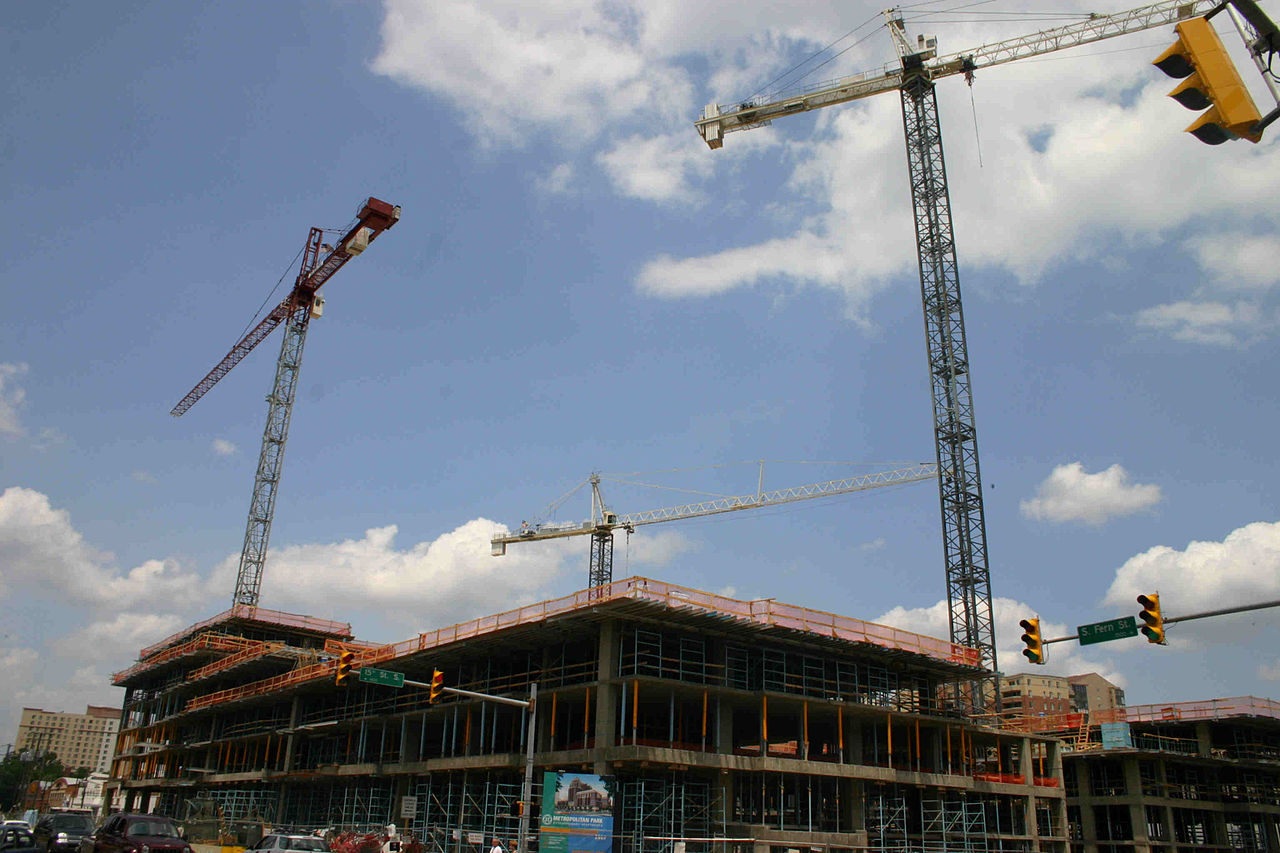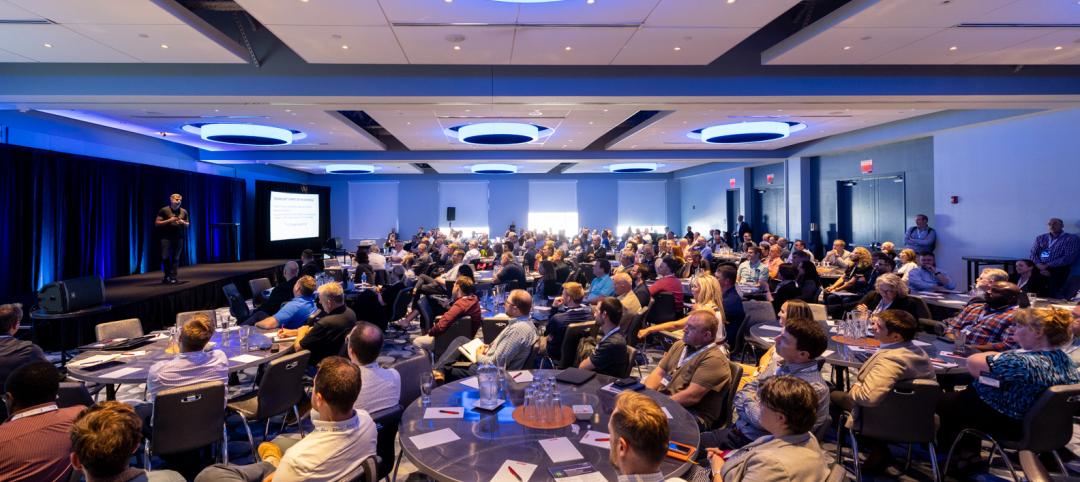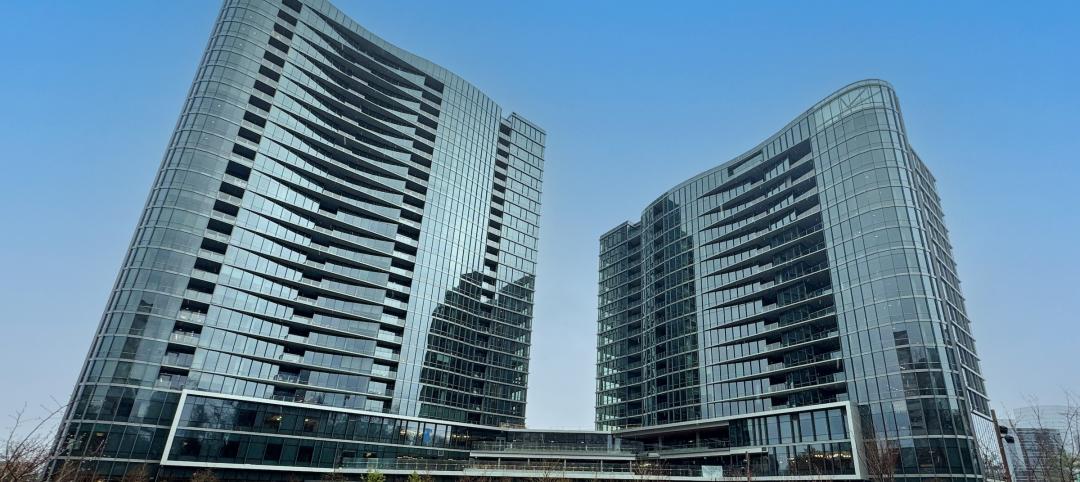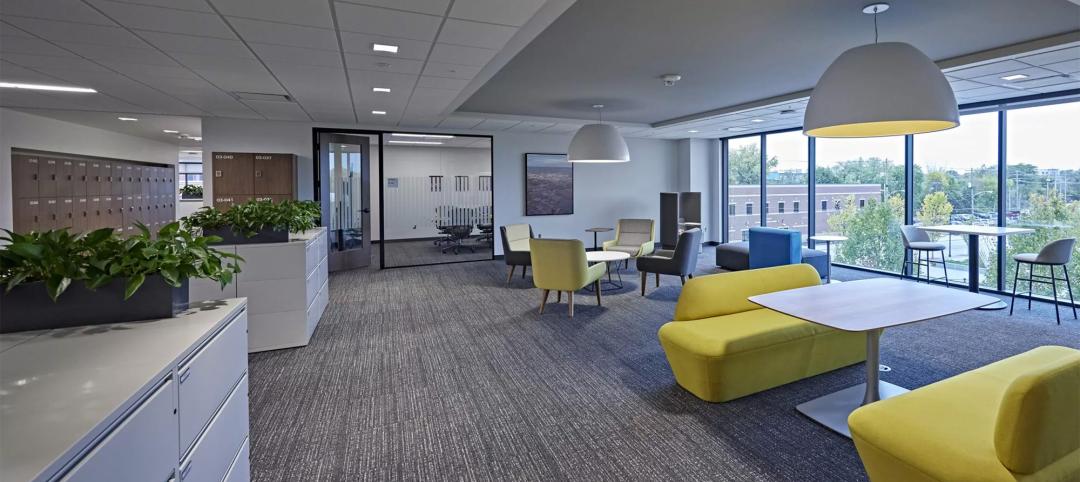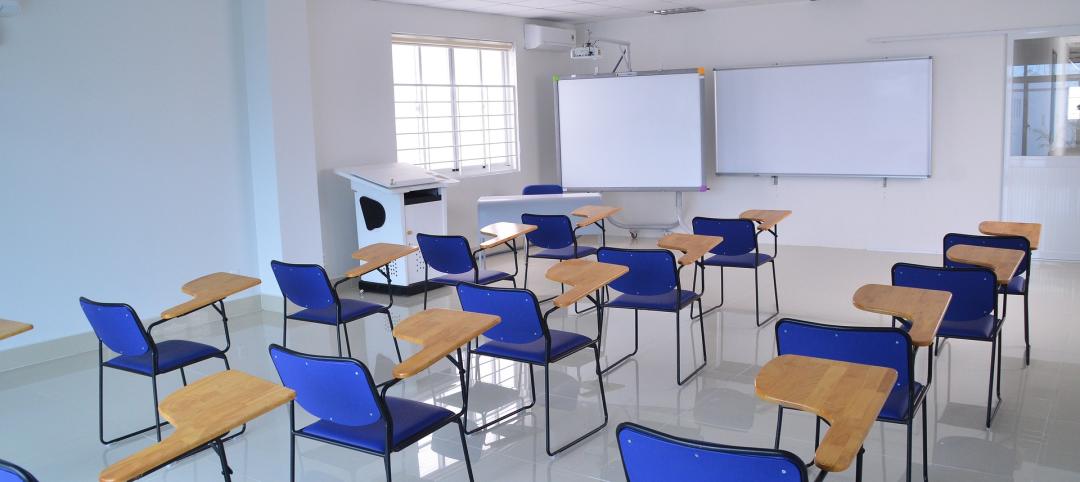This year's unusually difficult winter took its toll on construction activity. Nonetheless, first quarter spending for all the major groups was up compared to the same period in 2013.
The U.S. Census Bureau reported that total construction spending advanced 0.2% in March to $942.5 billion at a seasonally adjusted annual rate (SAAR). First quarter not seasonally adjusted (NSA) spending was 8.3% higher than the same period a year ago.
Nonresidential building construction spending fell for the fifth month in a row, down 1.0% to $298.8 billion (SAAR) in March. January and February spending were revised down by $3.3 billion and $6.4 billion, respectively, which was 1.1% and 2.1% of their respective previously reported numbers. That altered the monthly percentage change for January from +0.1% to ?0.9%. Despite the recent declines, first quarter NSA spending was 3.5% higher than in 2013.
Heavy engineering (non-building) construction spending increased 0.8% to $269.2 billion (SAAR) in March. January and February spending were revised down by $2.5 billion and $5.3 billion, respectively, which was 0.9% and 2.0% of their respective previously reported numbers. First quarter NSA spending was 4.5% higher than a year ago.
Total residential construction spending, which includes improvements, rose 0.7% in to $374.5 billion (SAAR) after inching up 0.1% in February. New residential construction spending, which excludes improvements, also increased 0.7% to $229.1 billion in March, its 30th consecutive monthly increase. First quarter NSA total residential construction spending was 16.0% higher than last year and new residential construction was 17.9% higher.
March private construction spending bounced back from February's 0.2% dip at a seasonally adjusted (SA) rate, increasing 0.5%. First quarter NSA spending was 12.5% higher than 2013 first quarter spending.
Meanwhile, public construction spending fell for the fifth consecutive month, down 0.6% in March. First quarter NSA public spending was 2.0% lower than a year ago.
The Economy
The economic data continue to indicate that the country is recovering from the harsh winter. At this point, the construction spending data are only available through March. We know that the bad weather across much of the nation extended into April and May. Thus we do not look for a quick rebound in the numbers, but continued slow improvement.
We do believe that economic activity is shaking off the winter blues and will continue to post better numbers. Employment growth is key, both as an indicator of how fast the economy is expanding and as a stimulus to further growth as newly hired workers spend their new income.
The Federal Reserve continues to ratchet down its monthly purchases of long-term assets. At the end of April, the Fed announced it would reduce its purchases of long-term assets from $55 billion per month to $45 billion per month starting in May. Prior to January, when the reduction in purchases began, the Fed was buying $85 billion of long-term assets per month. To date, the Fed's actions have led to only a relatively small increase in long-term interest rates.
Risks to the economy and construction remain. These include:
- A sustained spike in interest rates due to the Federal Reserve unwinding its asset purchase program too rapidly
- Sharp reduction in government spending in the short run
- Sovereign debt default by one or more European governments
- One or more European governments abandon the euro
- A sudden, significant increase in oil prices for a prolonged period
The probability of any one of these occurring is fairly low. Nonetheless they remain a potential negative for the economy and construction.
Two other issues will become important issues in the coming months. First, September 30 marks the end of the current federal fiscal year. At that point, appropriations for most government operations and programs expire. The appropriate action would be to have the necessary appropriation bills for the next fiscal year passed and signed into law prior to October 1. This is not a given. Appropriations for the current fiscal year did not become law until the middle of January 2014.
Second, the suspension of the debt ceiling expires in March. Prior to that, a new debt ceiling needs to be passed, the debt ceiling suspension needs to be extended, or—best of all worlds, but extremely unlikely—the debt ceiling needs to be eliminated.
Failure to deal with these issues in a timely manner will create additional uncertainty for business and the economy with negative fallout for investment and construction.
The Forecast
The Reed forecast assumes that, despite these risks, the economy grows at a moderate pace this year and next. Further, nonresidential building construction, which has been struggling of late, is forecast to gain traction and improve this year and next.
Heavy engineering (non-building) construction activity, which has shown some strength of late, is forecast to expand this year and next. Federal funding for infrastructure projects is expected to increase this year and beyond, although not by nearly the amount that is necessary to properly address the nation's aging infrastructure. The amount of funding available for public projects will greatly affect the level of infrastructure construction activity. Public-private partnerships at the state and local level will boost the amount of money available for infrastructure projects.
Total construction spending is forecast to increase 9.0% in 2014 and 11.3% in 2015, with nonresidential and heavy engineering construction gaining strength and residential construction continuing its expand.
For more from this report, including charts, click here.
Related Stories
AEC Tech Innovation | Jul 4, 2024
Caution competes with inevitability at conference exploring artificial intelligence for design and construction
Hosted by PSMJ, AEC Innovate in Boston found an AEC industry anxiously at the threshold of change.
Building Team | Jul 3, 2024
So you want to get published: What’s next?
In the AEC industry, securing media attention is no longer a niche endeavor but an essential component of a holistic marketing strategy.
Laboratories | Jul 3, 2024
New science, old buildings: Renovating for efficiency, flexibility, and connection
What does the research space of the future look like? And can it be housed in older buildings—or does it require new construction?
MFPRO+ New Projects | Jul 2, 2024
Miami residential condo tower provides a deeded office unit for every buyer
A new Miami residential condo office tower sweetens the deal for buyers by providing an individual, deeded and furnished office with each condo unit purchased. One Twenty Brickell Residences, a 34-story, 240-unit tower, also offers more than 60,000 sf of exclusive residential amenities.
Student Housing | Jul 1, 2024
Two-tower luxury senior living community features wellness and biophilic elements
A new, two-building, 27-story senior living community in Tysons, Va., emphasizes wellness and biophilic design elements. The Mather, a luxury community for adults aged 62 and older, is situated on a small site surrounded by high-rises.
Office Buildings | Jul 1, 2024
Mastering office layouts: 5 primary models for maximum efficiency and productivity
When laying out an office, there are many factors to consider. It’s important to maximize the space, but it’s equally important to make sure the design allows employees to work efficiently.
Smart Buildings | Jul 1, 2024
GSA to invest $80 million on smart building technologies at federal properties
The U.S. General Services Administration (GSA) will invest $80 million from the Inflation Reduction Act (IRA) into smart building technologies within 560 federal buildings. GSA intends to enhance operations through granular controls, expand available reporting with more advanced metering sources, and optimize the operator experience.
Sustainability | Jul 1, 2024
Amazon, JPMorgan Chase among companies collaborating with ILFI to advance carbon verification
Four companies (Amazon, JPMorgan Chase, JLL, and Prologis) are working with the International Living Future Institute to support development of new versions of Zero Carbon Certification.
K-12 Schools | Jul 1, 2024
New guidelines for securing schools and community spaces released by the Door Security and Safety Foundation
The Door Security and Safety Foundation (DSSF), in collaboration with Door and Hardware Institute (DHI), recently released of “Are Your Door Openings Secure?.” The document provides guidelines to equip school administrators, building management personnel, and community leaders with a clear roadmap to create a secure and safe environment.
Products and Materials | Jun 30, 2024
Top products from AIA 2024
This month, Building Design+Construction editors are bringing you the top products displayed at the 2024 AIA Conference on Architecture & Design. Nearly 550 building product manufacturers showcased their products—here are 17 that caught our eye.


